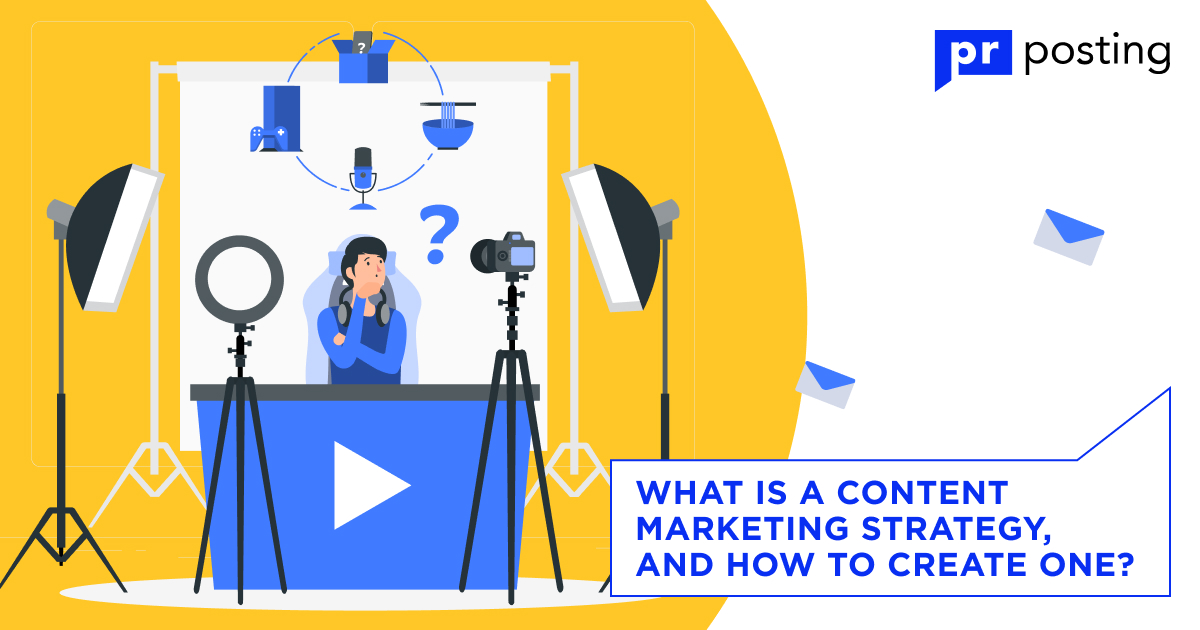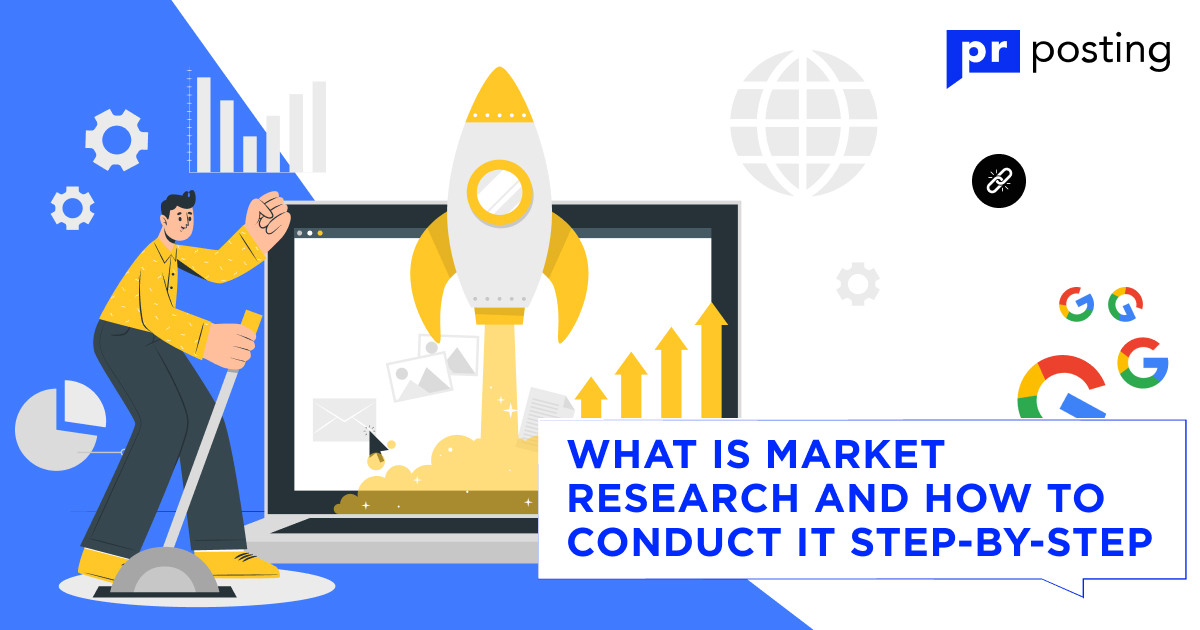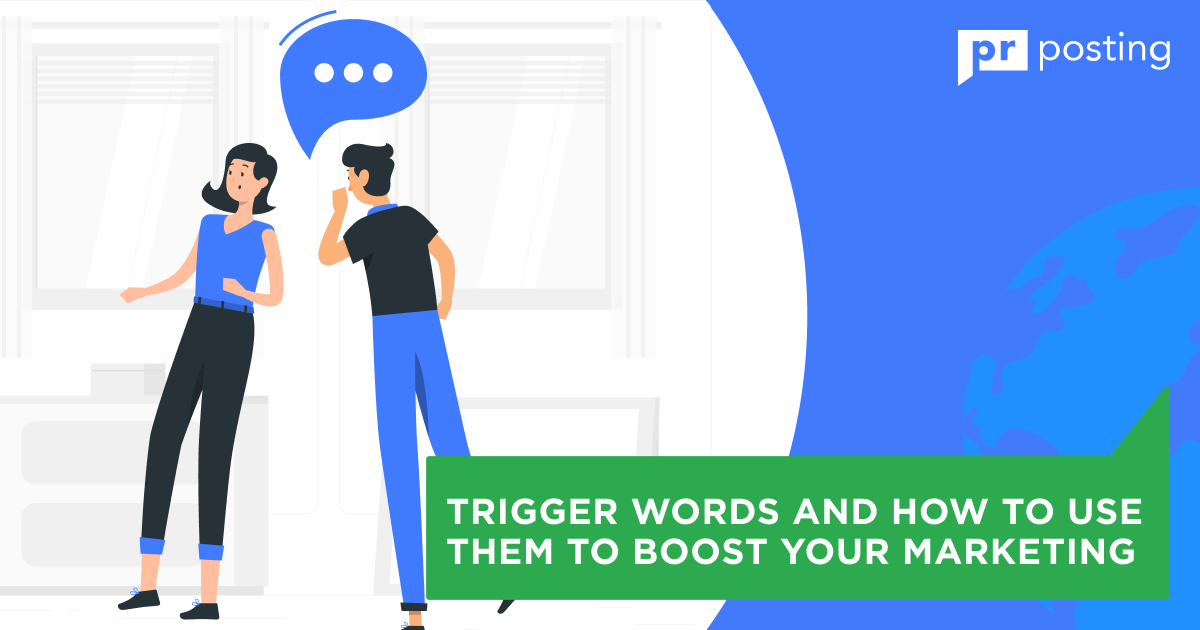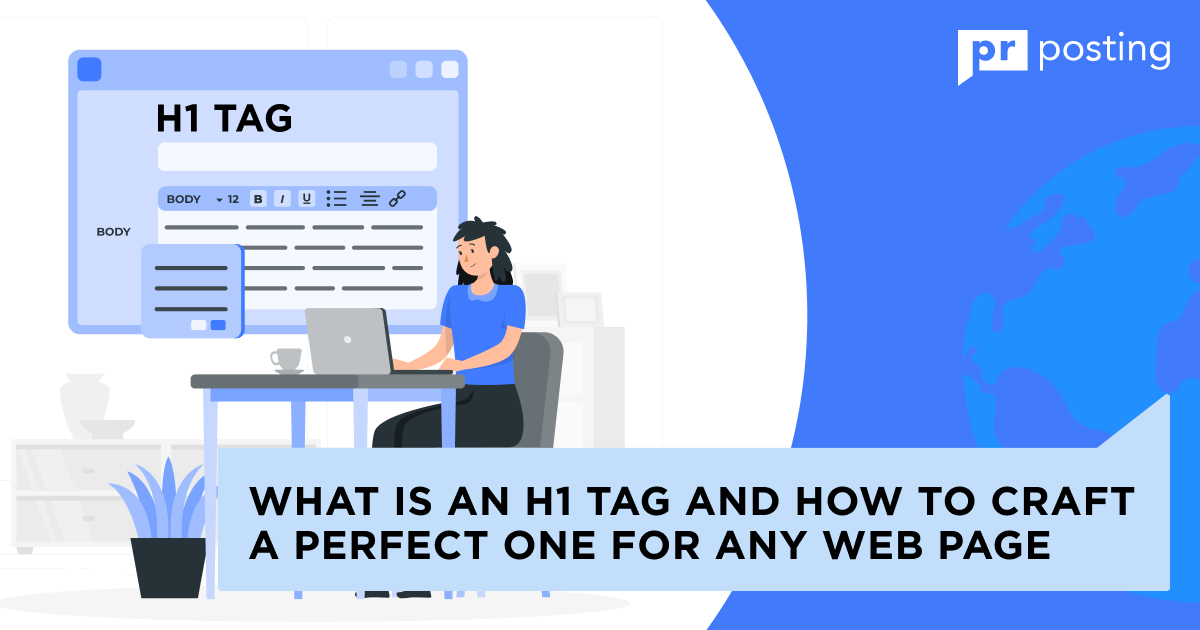What Is a Content Marketing Strategy, and How to Create One?

What Is a Content Marketing Strategy?
Content marketing is the establishment of contact with consumers by publishing useful and interesting materials that draw attention to the brand. This tool makes a brand more than just a seller or service provider. The company’s name becomes an answer to questions that arise in problematic situations. The brand is associated with quick and convenient solutions in a certain field.
Content marketing strategies are detailed long-term plans for the distribution of such materials. Their goal is to convey a certain type of content to consumers who are ready to perceive it and give a positive response in the form of targeted action. A marketing strategy defines the main areas of activity, means of achieving goals, and deadlines for completing key tasks. And specific decisions will be a matter of tactics, i.e., daily business activities.
Why Is a Content Marketing Strategy So Important?
Clear planning, quick response to challenges, and retrospective analysis are key elements of not only a marketing strategy but also business success. By following a clear plan, you will be able to work more efficiently, draw the right conclusions, and correct mistakes in time. All this is also true for the distribution of useful materials.
To understand the importance of a strategic content marketing approach, you should look at two key figures from the SEMRush study:
- 78% of successful companies had a clear publication plan and an advanced analytics system.
- 81% of companies that lost market share did not use strategic planning tools.
By publishing content on a clear, optimized schedule, you improve your brand’s visibility and awareness. Regularity and carefully selected timeframes improve the response to your messages. And the distribution of a series of useful, interrelated materials creates an expert image. In the long run, this builds trust in the business, enhances conversion rates, and increases the number of leads.
In addition, the publication of useful and interesting content is closely linked to SEO strategy. It allows you to post internal and external links to commercial pages, creating a complex navigation system and increasing the site’s ranking in search results. Moreover, it gives an impetus to business development, supporting it for a long time.
Key Elements of Effective Content Marketing Planning
All successful examples of content strategy have five key elements. You need to draw a consumer portrait, create a brand story, define the mission of content distribution, and develop a business model and a clear action plan. Each of these stages is worth a thorough study.
Target audience portrait
Get to know the readers who could potentially become your customers. Find out their average socio-demographic characteristics:
- Age;
- Employment sector;
- Income level;
- Key interests;
- Availability of their own housing and car;
- The propensity to travel and relocate, etc.
Having a comprehensive portrait of the consumer in mind, you can imagine what kind of content they will like. For example, “digital nomads” will be interested in materials about relocation, travel, and mobile electronics, successful men over 50 will be interested in cars, luxury goods, and investments, and students aged 18-20 will be interested in studying abroad, job search, and entertainment.
You can obtain information from surveys and other marketing research, both conducted by you and ordered from specialized agencies. Don’t forget to update your data regularly — statistics can change significantly as your business expands. Also, follow industry trends and learn from competitors’ content strategies.
Brand story
One of the most effective tools of content strategies is the personalization of the company. Imagine that your business has become a person. Who would it be? In the entertainment industry, it will be a hipster with a fancy hairstyle, in IT — a young specialist who combines professional vocabulary and an informal tone, and in banking — a solid entrepreneur in an expensive suit with well-thought-out speeches for business meetings.
Personalizing your company allows you to choose the right tone of voice. To create the most effective and relevant content, you should also answer the following questions:
- What is the history of the business — when did it start and how did it develop?
- What are the company’s values — what is its attitude towards consumers and employees?
- How do you build relationships with competitors?
- What is the main value of your product, and how does it differ from its competitors?
The answers are worth posting on your office wall in a gold frame.
The mission of content distribution
Why should consumers choose you over your competitors? Any content marketing strategy guide will advise you to find your unique advantage. Stand out and attract attention — without this, it will be very difficult to find your customers.
You should look for the benefits of a content strategy in areas where the goals of your business and your audience intersect. For example, as a supplier of vet products with the largest assortment, you can advise experts on how to create the best first aid kit for animals.
All the advantages of your business in communications with consumers form the mission of content distribution. It should answer the questions: who are you, why do you share your content, and how does your audience benefit from it?
Business model
Helping consumers and making friends with them is interesting and generous. However, you should remember that the goal of starting a business is always to make a profit. That’s why successful examples of content marketing strategies always have a well-thought-out scheme for tying useful publications to commercial goals.
For example, a plumbing company shares tips on how to install its products to attract the attention of professional installers and win their favor. And a smartphone manufacturer helps build an ecosystem of useful apps to be associated with productivity, speed, and comfort.
Once you’ve defined your long-term goals, you can break them down into business cases. In our plumbing example, these could be guest posts on blogs, regular posting on social media, and newsletters for professionals. For each of these tools, you can set deadlines and budget limits, which will make them more efficient, cost-effective, and predictable.
Strategic planning
To create a formalized content marketing plan, you first need to determine which platforms you will use. They include your website’s blog, external resources, social networks, e-mail, podcasts, multimedia services, etc.
Using a consumer profile, brand history, content distribution mission, and business model, you can divide your activity into separate campaigns. For example, building a subscriber base on YouTube, a weekly newsletter with useful tips, a blog post, and live communication with customers on social media.
Having communication campaigns with clearly defined goals, distribution methods, and platforms, you can move on to the next phase. Content marketing tactics include creating an event calendar. It includes each task that has a specific deadline. This allows you to create a clear management system with areas of responsibility, performance evaluation, and the possibility of promptly changing plans.
10 Steps to Develop a Content Marketing Strategy
Knowing a general theory is great, but when it comes to practice, you want to have a more detailed guide at hand. That is why we prepared a step-by-step plan to help you develop your personal content creation strategy and improve communication with potential customers.
1. Getting to Know Your Audience
The audience is the broadest category. It includes everyone who could potentially be interested in your content. To draw a portrait of its typical representative, you can focus on competitors or general industry trends.
Followers are direct content consumers. They are not necessarily customers, but they also bring you profit and increase marketing efficiency. This effect is created by word of mouth — in a conversation, these people can mention your brand and recommend it to their friends.
Clients or buyers are those who already have a history of cooperation with the business. It is very important to continue working with them even after receiving the targeted action — by increasing the level of loyalty to the company, you will make repeat sales easier and more efficient.
The smallest part of the audience is brand advocates. They don’t just come back to you again and again — they help you with marketing. These people defend the company’s interests in disputes and spread its message, increasing the effectiveness of advertising campaigns.
To effectively interact with your audience, you need to draw portraits of all four of its parts — from the biggest to the smallest. As a result, you will be able to personalize your content and find the most sensitive points of influence.
2. Define your goals
Move from general to specific. Determine what role content will play at each stage. For example, you want to become an opinion leader in the computer games segment. To do this, you need to:
- Get the most views on your blog and social media.
- Increase the number of views on social media by 30% per year.
- Order 30 additional guest posts on the largest social media platforms in the country.
- Reduce the cost of writing an article by 25%.
- Find an alternative contractor or attract a copywriter to your team.
This already looks like a ready-made content marketing strategy template and an action plan at the same time. You know where to start and what goal to achieve in the long run. To improve goal setting, use the SMART formula. It means that the goals should be:
- S — specific;
- M — measurable by quantitative indicators;
- A — achievable;
- R — relevant to the business;
- T — with clear time limits.
3. Set KPIs
Key performance indicators are a natural extension of goals, which follow from point M in the SMART formula. How do you know how effective your strategy is? Calculate quantitative measures of success at each of the stages of goal setting. For example:
- Increase sales by 50%.
- Extend the reach of the blog to 12% of the target audience.
- Create 100 posts with more than 1,000 likes.
Calculating KPIs is a separate branch of science at the intersection of marketing, mathematics, and strategic management. If you have any problems at this stage, it is better to contact an independent professional consultant.
4. Assess your current situation
Creating a content strategy doesn’t necessarily mean starting from scratch. In fact, your previous efforts will be a valuable source of information. Conduct a comprehensive audit to determine:
- which information distribution channels are most effective;
- what type of content (e.g., posts, articles, newsletters) gets the most views;
- what tone of communication appeals to your target audience;
- in which areas you are behind your competitors and in which you are ahead of them;
- what topics get the most reactions and comments.
Once you start with this, never stop doing this kind of research. The most successful brands in the world, such as Tesla, Apple, and Amazon, audit their content 2-4 times a year, which allows them to effectively adapt to the dynamic business environment.
5. Choose the best content distribution channels
Focus on audit metrics. However, remember that your past performance is not ideal but only a starting point. That’s why you need to include the performance of your most successful competitors in your decision-making process.
In some segments, the choice of channels may seem intuitive. For example, a business school should send newsletters, and a car manufacturer should showcase its products at specialized exhibitions. However, the modern world is oversaturated with standard solutions, so non-standard approaches are the most effective. With this in mind, always conduct serious research before relying on certain communication channels.
6. Choose the type of content
Again, your key tools will be the previous activities and experience of your competitors. If you are just taking your first steps in the business world, you need to study existing materials very carefully. Thoroughly review all publications in your segment, look for analytics in open sources, and order research.
The most common types of content in successful strategies:
- Social media posts — quickly grab attention but contain a limited amount of information;
- Blog articles — require well-thought-out advertising and optimization but provide the reader with a large amount of useful information
- Emails — have the highest conversion rate but are mostly targeted at existing customers and subscribers;
- Podcasts — suitable for listening on the go, provide high engagement, but have a limited audience;
- Video — a vivid, informative, and effective content format but expensive for businesses compared to other means of communication.
7. Create a calendar for posting content
Planning, planning, planning. To determine the time frame, focus on long-term goals and KPIs. Remember that each content marketing technique has a certain effectiveness and speed of action. For example, according to a preliminary estimate, you can get 20 thousand subscribers by publishing 15 articles in 3 months.
To create a publishing calendar, you need to consider a few issues:
- The frequency of repetition. Find a golden mean — frequent posts annoy people, and rare posts make them forget about the existence of the brand.
- The delay between action and result. Rely on expertise of a specialist or of the research author, or, if all else fails, your own.
- Timeliness. Some types of content can be effectively related to certain moments, such as holidays, falling or rising stock prices, and new product launches. Plan content for predictable events but leave room in your calendar for unexpected occasions.
A well-designed calendar is not just an action plan. It’s an effective tool for creating a budget, defining areas of responsibility for employees, and even developing an HR policy.
8. Generate content
We’ve examined what is a content marketing strategy. And in it, everything depends on you — your knowledge of the product, the market, and the consumer portrait. But we can give you some tips that will make your work more effective:
- Be original. Study your competitors’ materials to avoid repeating them. If the topic is relatively new, look for something that has not yet been discussed in the media. If you have to repeat yourself, find a new way to present the information — in graphs, videos, pop-up tips, mobile apps, etc.
- Experiment. Don’t limit yourself to a certain type of content specific to your industry. Dilute articles with social media posts and podcasts — be a leader, not a follower.
- Reuse content. Minor edits and updates will help you. Present the video in a different context, make a summary of the article, repeat the post on social media. By doing so, you can get the desired result with minimal effort.
- Add content from users. Give your customers and subscribers motivation to write reviews and articles, shoot videos, and share recommendations on social media. Focus on building a layer of supporters and brand advocates.
9. Distribute and promote content
To maximize the coverage of your target audience, combine three types of content distribution channels:
- Owned. Websites, landing pages, official social media pages, and newsletters. This is a priority area of development because it generates organic traffic, which brings the most profit in the long run.
- Paid. Contextual advertising in search engines and social networks, sponsored posts, and influencer engagement. It is well suited for targeted promotion of the most sensitive content that gives a quick effect.
- Achieved. Mentions, shares, reviews, and other materials from ordinary users. They strengthen organic traffic sources but require a creative approach.
10. Measure and analyze results
Even when your content is already published online, you shouldn’t stop. This is where the most important phase of implementing strategic plans begins. Collect all possible quantitative indicators — reach, views, reactions, comments, etc. Analyze the effectiveness of your posts concerning previous results, competitors’ data, and general market trends.
To increase the effectiveness of analytics, you should use specialized tools — from Google Analytics to Ahrefs and Moz consoles. Most of them will require a paid subscription, but they provide invaluable information. Use their data to identify the most and least successful marketing areas, adjust your plans, and improve efficiency.
A Content Marketing Strategy Is a Powerful Tool for Effective Influence
If you want your business to succeed in the digital age, you need to speak the same language as your customers. In all effective examples of content marketing strategy, the company acts not just as a seller but as a friend and assistant. To achieve this goal, you need to go through several stages: create a customer profile, set a mission to disseminate information and commercial goals, choose the right types of materials and methods of their promotion, and set up data collection on results and analytics.
FAQ
What is a content marketing strategy?
A content marketing strategy is a detailed long-term plan for distributing useful information to attract the attention of potential customers, increase their loyalty, and establish trusting relationships.
Why is a content marketing strategy important?
Consistent content posting improves brand visibility and awareness, strengthens customer loyalty, creates an expert image of the company, and increases the effectiveness of the SEO strategy.
What are the key elements of a content marketing strategy?
To build a strategy, you need to develop a consumer profile, create a brand story, define the mission of content distribution, build a business model, and write an action plan.
How to create a content marketing strategy?
Knowing your audience, product, and market allows you to choose the right types of content and channels to promote them, create communication campaigns, and schedule planned actions in your calendar. This will allow you to plan your time and resources.





